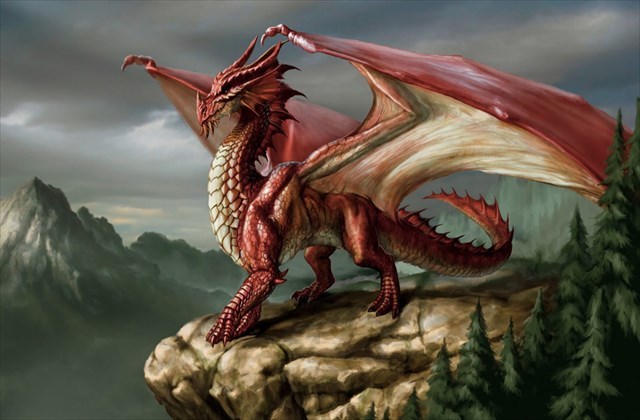

In continuation of the HIDDEN CREATURES theme:
YETI: also: abominable snowman (n) a big creature like a human covered in hair that is believed by some people to live in the Himalayas.
Abominable Snowman, Tibetan Yeti, mythical monster resembling a large, hairy, apelike being supposed to inhabit the Himalayas at about the level of the snow line. Though reports of actual sightings of such a creature are rare, certain mysterious markings in the snow have traditionally been attributed to it. Those not caused by lumps of snow or stones falling from higher regions and bouncing across the lower slopes have probably been produced by bears. At certain gaits, bears place the hindfoot partly over the imprint of the forefoot, thus making a very large imprint that looks deceptively like an enormous human footprint positioned in the opposite direction.
In 1921, a British expedition into the Himalayas, led by Charles Howard-Bury, brought the Yeti to the western world’s attention for the first time. Howard-Bury told a reporter that he had seen monstrous footprints in the snow; the reporter, in turn, nicknamed the mysterious creature who had left these footprints “the Abominable Snowman.” In 1950, the first Yeti photos were taken by Eric Shipton, during an attempt to climb Mt. Everest. Although the photographs only captured the creature’s footprints, and not the creature himself, they were enough to make the Yeti famous overnight. During the 1950s, almost every Western explorer who ventured into the Himalayas brought back tales of the Yeti. Some of them brought evidence too: photographs of shaggy, bipedal creatures in the distance, plaster molds of giant footprints, and even samples of reddish hair. By 1957, expeditions were being funded specifically to search for the Yeti. These produced more photos, hair, and even feces. In the 1960s, Yeti evidence began getting grislier. Explorers smuggled whole body parts out of the Himalayas, including a finger, a hand, and a scalp that were supposed to belong to the elusive monster.
Native folklore can be explained as cautionary tales, meant to keep children from wandering into the wild or approaching wild animals, and photographs can be dismissed or hoaxes or cases of mistaken identity. But what about all the bits of fur and bone that explorers have collected over the years? Faced with concrete evidence that the Yeti might exist, scientists have begun coming forward to examine hair, feces, bone, and skin samples. Most of the samples have been attributed to known animals like brown bears, yaks, langur monkeys, Tibetan blue bears, or even humans. But some of them stand up to genetic testing. Scientists have either found no match for the samples (indicating that they might have come from an unknown species) or have matched the samples to an ancestor of the polar bear, which was previously thought to be extinct. However, damage to the samples could also explain these seemingly positive results. Until a full, Yeti carcass (or, better yet, a live Yeti!) is produced for scientists to study, this “abominable monster” will probably remain a secret of the Himalayas forever.
Info. courtesy from: https://www.britannica.com/topic/Abominable-Snowman and https://mythology.net/mythical-creatures/yeti/

DRAGON: a mythical monster like a giant reptile. In European tradition the dragon is typically fire-breathing and tends to symbolize chaos or evil, whereas in East Asia it is usually a beneficent symbol of fertility, associated with water and the heavens. a mythical monster, usually represented as a large reptile with wings and claws, breathing out fire and smoke
legendary monster usually conceived as a huge, bat-winged, fire-breathing, scaly lizard or snake with a barbed tail. The belief in these creatures apparently arose without the slightest knowledge on the part of the ancients of the gigantic, prehistoric, dragon-like reptiles. In Greece the word drakōn, from which the English word was derived, was used originally for any large serpent (see sea serpent), and the dragon of mythology, whatever shape it later assumed, remained essentially a snake.
In general, in the Middle Eastern world, where snakes are large and deadly, the serpent or dragon was symbolic of the principle of evil. Thus, the Egyptian god Apepi, for example, was the great serpent of the world of darkness. But the Greeks and Romans, though accepting the Middle Eastern idea of the serpent as an evil power, also at times conceived the drakontes as beneficent powers—sharp-eyed dwellers in the inner parts of the Earth. On the whole, however, the evil reputation of dragons was the stronger, and in Europe it outlived the other. Christianity confused the ancient benevolent and malevolent serpent deities in a common condemnation. In Christian art the dragon came to be symbolic of sin and paganism and, as such, was depicted prostrate beneath the heels of saints and martyrs. The dragon’s form varied from the earliest times. The Chaldean dragon Tiamat had four legs, a scaly body, and wings, whereas the biblical dragon of Revelation, “the old serpent,” was many-headed like the Greek Hydra. Because they not only possessed both protective and terror-inspiring qualities but also had decorative effigies, dragons were early used as warlike emblems. Thus, in the Iliad, King Agamemnon had on his shield a blue three-headed snake, just as the Norse warriors in later times painted dragons on their shields and carved dragons’ heads on the prows of their ships. In England before the Norman Conquest, the dragon was chief among the royal ensigns in war, having been instituted as such by Uther Pendragon, father of King Arthur. In the 20th century the dragon was officially incorporated in the armorial bearings of the prince of Wales. In the Far East, the dragon managed to retain its prestige and is known as a beneficent creature. The Chinese dragon, lung, represented yang, the principle of heaven, activity, and maleness in the yin-yang of Chinese cosmology. From ancient times, it was the emblem of the Imperial family, and until the founding of the republic (1911) the dragon adorned the Chinese flag. The dragon came to Japan with much of the rest of Chinese culture, and there (as ryū or tatsu) it became capable of changing its size at will, even to the point of becoming invisible. Both Chinese and Japanese dragons, though regarded as powers of the air, are usually wingless. They are among the deified forces of nature in Taoism. The term dragon has no zoological meaning, but it has been applied in the Latin generic name Draco to a number of species of small lizards found in the Indo-Malayan region. The name is also popularly applied to the giant monitor, Varanus komodoensis, discovered on Komodo, in Indonesia.
Information courtesy of: https://www.britannica.com/topic/dragon-mythological-creature






Come and join in to discuss the last chance to get some Hidden Creatures souvenirs!
Date: Tuesday, 24 July 2018
Time: 07h00 to 08h00
Place: Europa, Cnr Lesley & Douglas Rds, Douglasdale Village Centre, Douglasdale
We look forward to seeing you there!